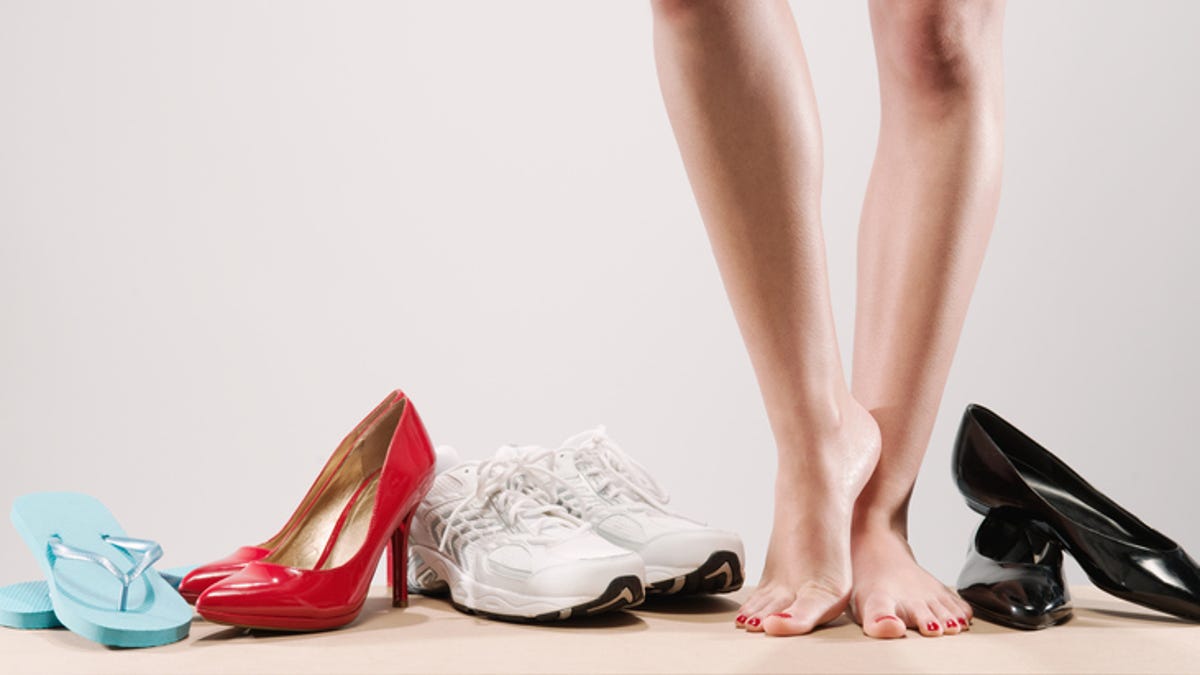 Why You Can Trust CNET
Why You Can Trust CNET You Might Be Wearing the Wrong Shoes. Here's How to Tell
Wearing the wrong shoes can have serious consequences for your feet. But how do you know?

There are so many types of shoes. Most people's closets are filled with a shoe for every occasion. But we all have the pair we wear the most. That pair of shoes can't just look good; it's important that they're comfortable and supportive for your feet.
Writing off minor annoyances is easy when you like how a shoe looks or how convenient it is. So what if my toes are a little squished? This type of shoe always causes blisters. Don't ignore those thoughts. Wearing the wrong type of shoes can lead to injury and potential long-term foot issues.
6 signs you need to change your footwear
Shoes that aren't suitable for your needs will tell you; you just have to know that to look for. Here are the most common signs that your shoes do more harm than good for your health.
Blisters or calluses
We've all had blisters -- they can be painful but mostly just a nuisance that goes away. Most people assume they come with the territory of breaking in new shoes, or they may be a side effect of a hard workout. However, recurring blisters and calluses indicate that your shoes don't fit as they should. They're likely too tight, and the shoe is rubbing against your ankles and toes to cause them.
Squished toes
Some shoes are tighter than others, as in the case of high heels versus sneakers. However, no shoe should squish your toes so much that it hurts or you can't wiggle them. Wearing shoes that squish your toes may lead to ingrown toenails or toenail loss.
It can also lead to nerve troubles in the feet. Morton's neuroma is the thickening of a nerve between the third and fourth toes. It feels like a sharp, burning pain that branches into the toes. It can also feel like you're standing on a pebble when you shift your weight to the ball of your foot. One of the main contributors to this condition is wearing ill-fitting or too-tight shoes that squish your toes together.
In general, your shoes should feel snug but not tight on your toes.
Your arches hurt
Shoes that are supportive and comfortable don't hurt your feet. If you take your shoes off after a normal day and your feet hurt, that may point to your shoes not fitting, or they are not supportive enough for your needs. For example, flimsy flip-flops or flat shoes lack arch support. Wearing them as your primary shoe causes plantar fasciitis, the inflammation of the band of tissue from your toe to your heel. It feels like a stabbing pain in your heel.
Depending on how arched your feet are, you may need more or less support for your shoes. Insoles are an option for adding arch support to your current shoes. They will ensure your foot is in the right position in the shoe and gets the arch support needed.
You're walking differently
This one may happen without your notice, but ill-fitting shoes may change how you walk. Or rather, you start to walk in a way that avoids the negative side effects of wearing the wrong shoes -- pain, blisters and sore feet. If you notice that you're walking slower, limping or avoiding taking large steps, then your shoes may be to blame.
Your foot is slipping inside the shoe
Until now, we've discussed signs that your shoes may be too tight. Now it's time to talk about the negative effects of wearing shoes that are too big. A telltale sign of your shoes not fitting is your foot moving around while you walk. Wearing shoes that are too large for your feet is more likely to cause corns and calluses because your foot has more room to rub against the shoe.
The toes and balls of the feet have to overcompensate when the shoes are too big to keep the shoe in place when you step. It can also lead to a condition called metatarsalgia, which develops when there is too much pressure on the balls of your feet.
Your ankles or shins hurt
Wearing the wrong types of shoes not only hurts your feet but the rest of your body too. That's right; inadequate footwear puts more strain on your back, hips and knees because they aren't aligned. One of the common signs that your shoes aren't supportive and don't absorb the impact enough is regular ankle and lower leg pain.
Too long; didn't read?
Wearing the wrong footwear can have serious impacts on your feet. It isn't just limited to your feet; it can also lead to arthritis or joint pain in the knees or hips. You're not supposed to adapt to the shoe. The shoe should fit from the start.

